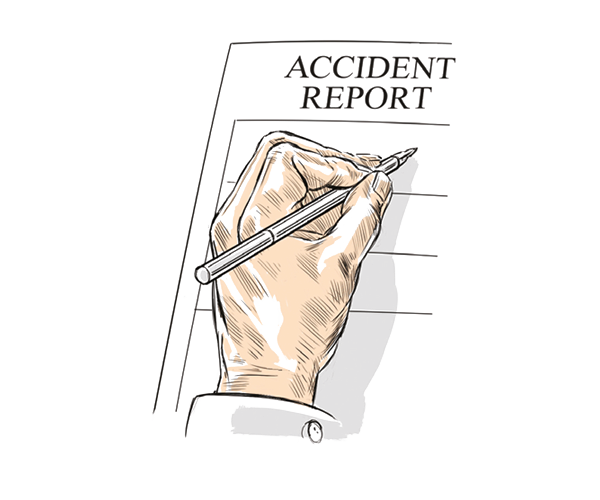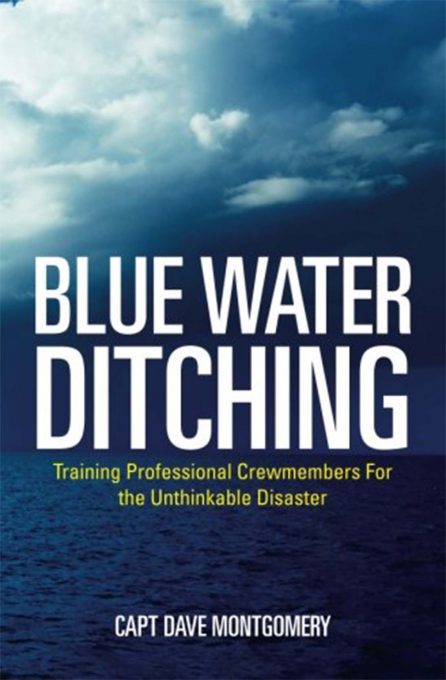Carb heat havoc (1)
Cessna 150
N3795J
Fulton, New York
Injuries: One serious
After descending with the engine power above 2,000rpm, the pilot entered the traffic pattern for the destination airport. Just after turning onto the base leg of the pattern, the pilot applied the carburettor heat and the engine ‘faltered’ and lost partial power. The pilot then deactivated the carburettor heat and the engine regained some power. He reapplied the carburettor heat and the engine stopped. He attempted to restart the engine but was unsuccessful. While performing a forced landing to a road, the right wing impacted a utility pole and the aeroplane rolled over and sustained substantial damage to both wings and the fuselage.
Comment: The weather conditions at the time of the accident were favourable for carburettor icing at altitude and at the surface. It is likely that carburettor ice developed during the descent. When the pilot applied the carburettor heat while in the traffic pattern, the ice began to melt, which introduced water into the engine intake and resulted in the engine losing partial power. The pilot’s subsequent cycling of the carburettor heat at a relatively low power setting likely resulted in the total loss of engine power.
“Too much carb heat is rarely detrimental…”
Carb heat havoc (2)
Piper PA28
N5575U
Parker, Colorado
Injuries: None
After completing the pre-flight inspection, the pilot reported a normal engine run-up and recalled checking the carburettor heat and magnetos twice before take-off. He started the take-off roll and noticed that it was a ‘little longer than normal’ and that the aeroplane’s climb performance was poor. He applied carburettor heat, noted a loss of rpm, then turned the carburettor heat off.
Shortly thereafter, the aeroplane started to descend, and the pilot performed a forced landing to a field.
The atmospheric conditions at the time of the accident were conducive to the formation of serious carburettor icing at cruise power settings. It is possible that carburettor ice formed before departure, when the engine was operating at a low power setting, which resulted in a partial loss of engine power during the initial climb.
Comment: Damp days when the dew point is close to the air temperature always demand respect.
Mist or fog can spoil your plans, but it is those carburettor-equipped engines that are at greatest risk which, of course, comes in the form of carb-icing. With air temperatures still very much in the 0-15° range that risk can be at its greatest and carb heat is invariably required. But the consequences of applying it can be misunderstood. These accidents remind us that first impressions are not always correct and that too much carb heat is rarely detrimental. Too little on the other hand, and a failure to maintain it, can be terminal.
Unfortunate loss
Europa
G-FLOR
Brinkworth, Wiltshire
Injuries: None
The pilot was on a local flight from Cotswold Airport with a passenger. The aircraft was flying at approximately 100kt and 2,500ft amsl when, without warning, the left cockpit door detached. After checking that the aircraft’s control responses appeared normal, the pilot returned to Cotswold where the aircraft landed without further incident.
Subsequent inspection of the left tailplane identified minor damage to the leading edge and upper surface consistent with it having been struck by the door. This was the eighth event involving the inadvertent opening of cockpit doors fitted to Europa aircraft operated in the UK. The LAA have developed and issued a modification to the Europa to prevent the door latch lever reaching the closed position when the door is not properly latched.
LAA Airworthiness Information Leaflet MOD/247/012, is mandatory and is required to be applied within five flying hours of the issue date, or next Permit revalidation, whichever comes first.
Comment: The pilot reported that several times he checked that the left-hand door was latched but that it was difficult to confirm properly with a passenger sitting in the seat next to him, and that the passenger had difficulty doing so also because of the proximity of the door. Ultimately though, an incorrect assumption was made about the security of the door. It is little comfort that the pilot was not alone in making this mistake which is why the time has come for an engineering solution to mitigate the risk of an accident ‘waiting to happen’… again.
Terrifying upset
Jabiru J400
G-CCPV
Teyioyhead, Scottish Borders
Injuries: None
The pilot used an internet forecast to check the weather and noted a south-westerly wind of 20kt, good visibility, and overcast cloud with a base of 3,500ft. The pilot departed from a privately owned airstrip in the Scottish Borders area with an intended destination of Sleap.
The highest spot elevation in the vicinity of the planned route was 1,953ft amsl. The pilot requested and received a basic service from Scottish Control. While flying at 2,500ft approaching high ground to the north-west of the Spadeadam danger area, he estimated there was 800ft between cloud base and high ground.
“He attempted to climb in cloud, but felt the aircraft stall…”
The pilot reported that as he was approaching the highest point on his planned route the cloud suddenly descended and he entered it. He attempted to climb using full power and became disoriented. He felt that the aircraft stalled and that he had lost control. The aircraft completed three 360° right turns before it emerged from the cloud. The aircraft was in the cloud for between three and four minutes.
The pilot headed for the only area that he could see was clear of cloud and inadvertently entered the Spadeadam danger area. The controller noticed G-CCPV had entered the danger area and contacted the pilot. When informed that the pilot had lost control in IMC the controller offered help and coordinated with the Spadeadam controller. The Scottish controller proactively followed up with the pilot of G-CCPV later in the flight to check on his safety.
Comment: This must have been terrifying. Unplanned entry into cloud is bad enough but add in high ground into the mix, limited aircraft performance and dated instrument flying practice and the odds of survival diminish rapidly. Some instrument flying skills (and an IFR capable aeroplane) improve matters, but for most of us staying well away from the cloud base is crucial and turning back early before the ‘letter box’ slams shut is an absolute must.
Look and listen
Pitts S1/Rutan Varieze
N31WK/N27GM
Torrance, California
Injuries: One minor
The pilot of the tailwheel-equipped biplane had landed and was taxying to his hangar while monitoring the tower frequency. The pilot did not perform S-turns during his taxi and was not informed of another aeroplane in his proximity. The pilot of a low-wing aeroplane was parked near a movement boundary area. He watched the biplane taxi down the taxiway without performing S-turns. The pilot of the low-wing aeroplane had previously contacted the ground controller and was not informed of the taxying biplane. The biplane impacted the low-wing aeroplane, resulting in substantial damage to the low-wing aeroplane and minor damage to the biplane.
Comment: Torrance is a busy place with more than 500 GA hangars and split tower and ground frequencies. So, failing to clear the area in front of your own aircraft while taxying and not being on the same frequency as other airfield traffic, just aligned two of those infamous holes in your piece of Swiss cheese. All you need now is for there to be another aircraft in front of you and…
On the Edge
Edge 540
G-EDGY
Tempsford Airfield, Bedfordshire
Injuries: None
During an aerobatic flight, as the pilot applied a full left aileron control input, the centre hinge attachment for the right aileron failed. This allowed the right aileron to bend up in the centre and fail before detaching from the aircraft. Only a small inboard section of the aileron remained attached. The pilot had sufficient control remaining to make a safe landing.
The investigation found that the centre hinge attachment for the right aileron failed due to fatigue cracks developing to such an extent that the parts were no longer able to carry the required load. These fatigue cracks had multiple origins indicating that they were not due to a material feature or flaw. The aircraft manufacturer has issued a service letter to all known owners recommending regular detailed inspections of similar aileron centre hinge attachments.
Comment: Sometimes critical areas are hard to get access to and hinge brackets in particular rarely get a proper inspection unless there is a major strip down of the control assemblies. However, this accident reminds us that in high-hours aircraft and those used for aerobatics, hinge brackets take significant punishment and therefore benefit from more than the occasional cursory glance.






